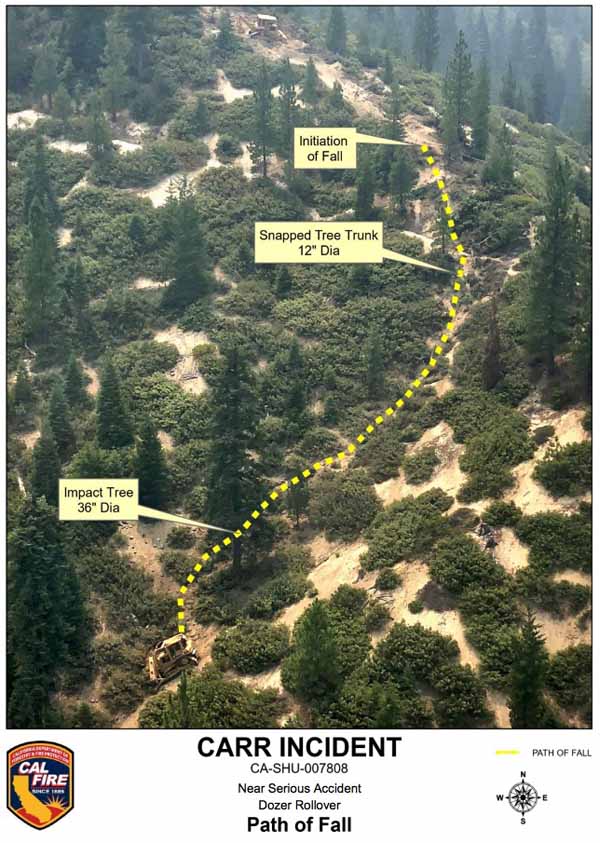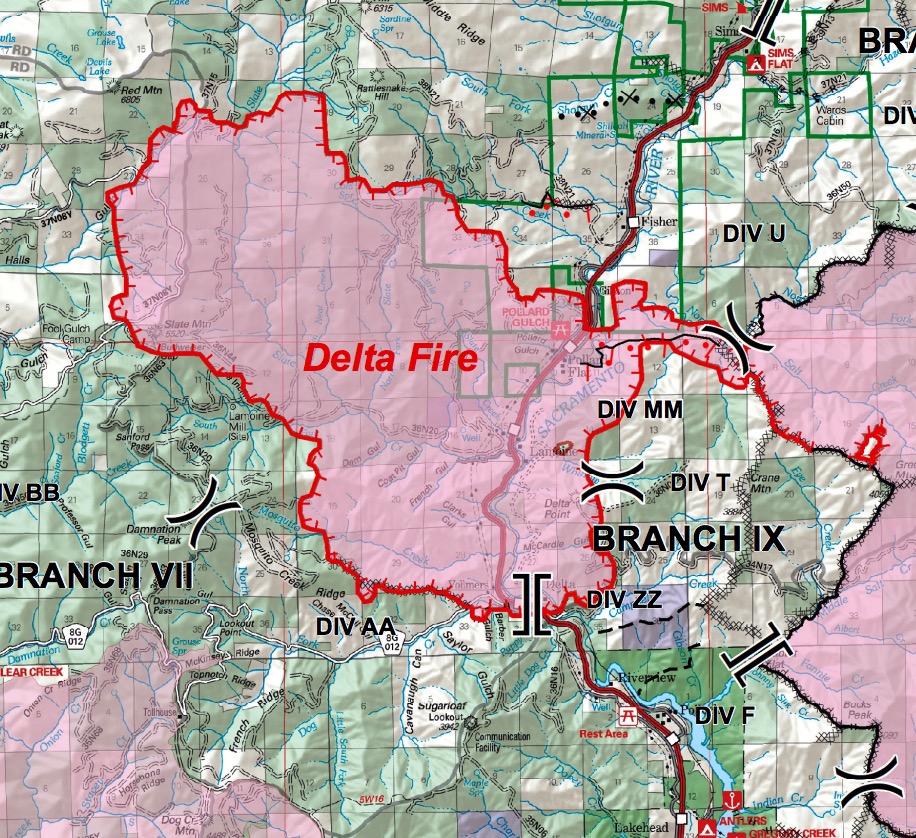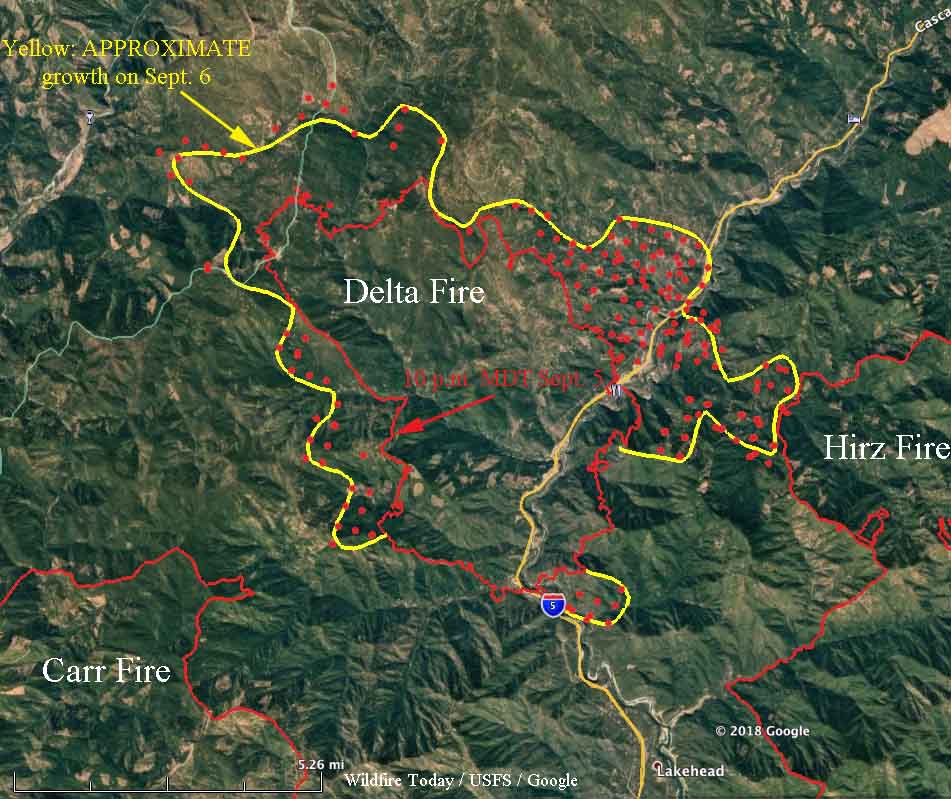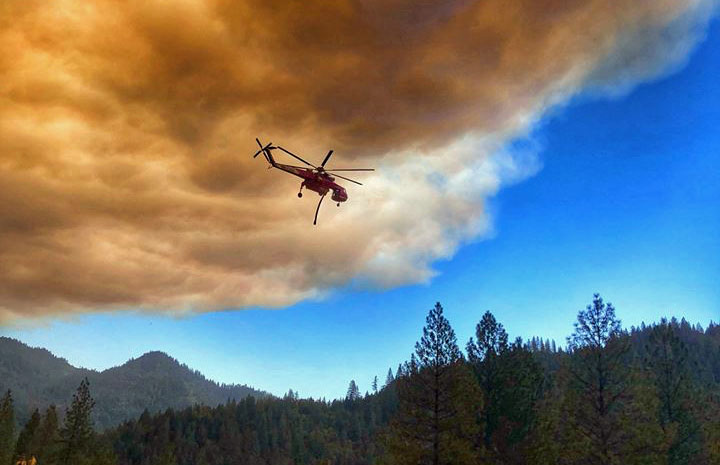
(UPDATED at 2:37 p.m. PDT September 10, 2018)
Interstate 5 is now open. Officials reopened the highway Monday morning, with one lane available in each direction through the fire area. The lane restriction is in effect for 17 miles between Antlers Bridge in Lakehead and Flume Creek Road, south of Dunsmuir, Caltrans said in a statement.
(UPDATED at 8:52 a.m. PDT September 10, 2018)
Firefighters are making progress, slowly, on the 46,150-acre Delta Fire which has forced the closure of Interstate 5 north of Redding, California. Some of the challenges they are facing include very steep, remote terrain and inversions that trap smoke making aerial support difficult or impossible at times.
One of their goals is to contain the spread near the Interstate so that the very important transportation corridor can be reopened. But in addition to that, thousands of hazardous trees near the highway have be evaluated and mitigated and guard rails destroyed by the fire have to be replaced.
On the southeast side of the fire east of the Interstate crews firing out along a dozer line had a setback when the fire spotted across, requiring them to back off and come up with a modified plan. The firing operation along a dozer line on the north side of the fire west of I-5 appears to be going well, but slowly due to unfavorable winds.

(UPDATED at 9:55 a.m. PDT September 9, 2018)
Daily inversions have been restricting the growth of the Delta Fire 24 miles north of Redding, California. This atmospheric condition can trap smoke, reduce the visibility for aircraft attempting to drop water or retardant on the fire, keep the relative humidity higher than normal, and prevent direct sunlight and strong winds from influencing the fire.
But in spite of the inversion the fire has continued to grow over the last two days along most of the perimeter, adding thousands of acres each day. A mapping flight Saturday night determined that almost 4,000 acres had burned since the previous night bringing the total up to 40,580.
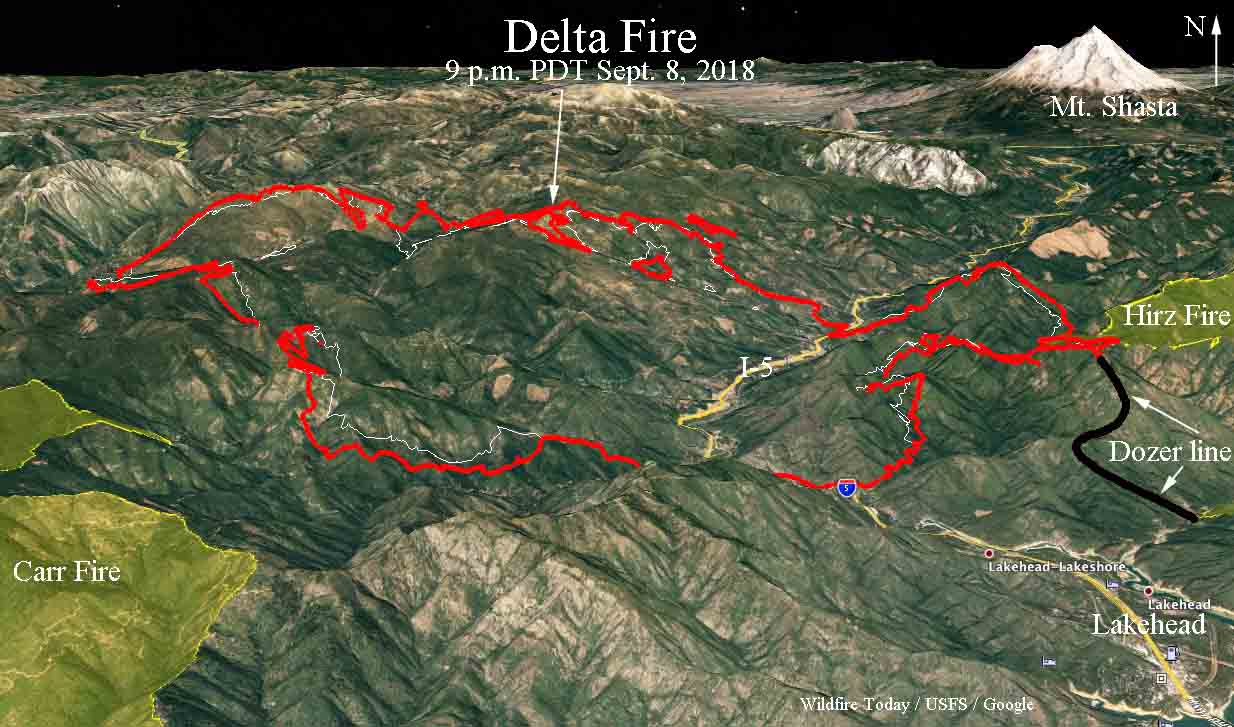
Firefighters are conducting at least two large firing operations. One of them is 2 miles west of I-5 on the north side of the fire along a 5-mile long dozer line stretching from the Interstate west up to a 6,500-foot ridge. At 9 p.m. Saturday about three-quarters of a mile had been completed on this project.
(To see the all of the articles on Wildfire Today about the Delta Fire including the most recent, click here: https://wildfiretoday.com/tag/delta-fire/)
The other large firing operation is on the southeast side between I-5 and the Hirz Fire. This is proceeding down a dozer line constructed as a contingency line during the battle to contain the Hirz Fire. The dozer line can be seen in black on the map below and the one above.

Two spot fires have been growing slowly on the northwest side of the fire southeast of Pond Lily Lake above 5,000′ elevation. They are most likely low priority to deal with, considering that stopping the spread of the fire along Interstate 5 so it can be reopened has to be near the top of the Things To Do list. There is no word on when this major highway will be open to traffic again. About 45 miles of the Interstate are closed.
Evacuations are still in effect for the communities of Delta, Lamoine, Pollard Flat, Sims and Castella. The Trinity County Sheriff’s Office Facebook page has the most current evacuation information.
Two structures have been destroyed, but officials have not specified if they were residences or out buildings. Approximately 2,132 personnel are assigned to the fire.
(UPDATED at 1:14 a.m. PDT September 8, 2018)
The Delta Fire 24 miles north of Redding, California on Friday added another 12,000 acres moving north, south, east, and west through the Shasta-Trinity National Forest. Overnight mapping determined that the fire has burned almost 37,000 acres.
Shortly after it started on September 5 it crossed and forced the closure of Interstate 5, the main north-south highway in Northern California. It continued to spread east and has merged with the 46,000-acre Hirz Fire. The two fires now share a two-mile long section of their perimeters. Unless the weather changes, that sharing is likely to increase especially on the southeast side of the Delta Fire north of Lakehead where there is the potential to have another 5 miles of common fire edge.
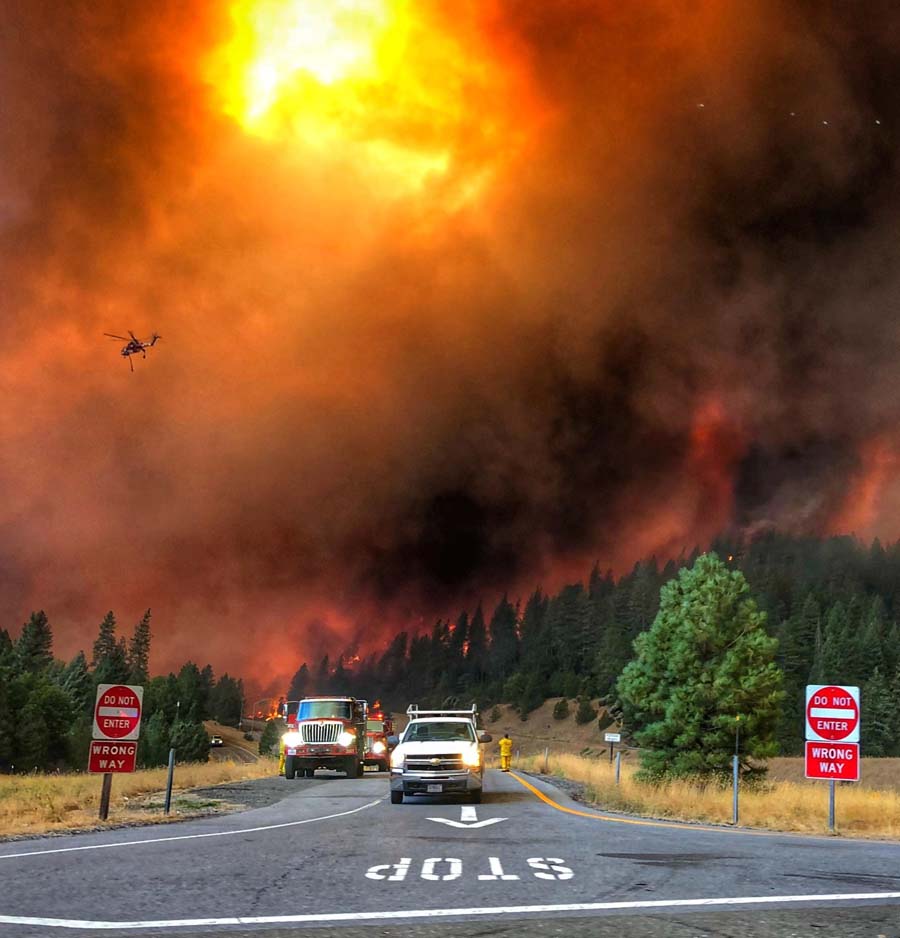
Multiple commercial vehicles and several structures have been damaged or destroyed.

